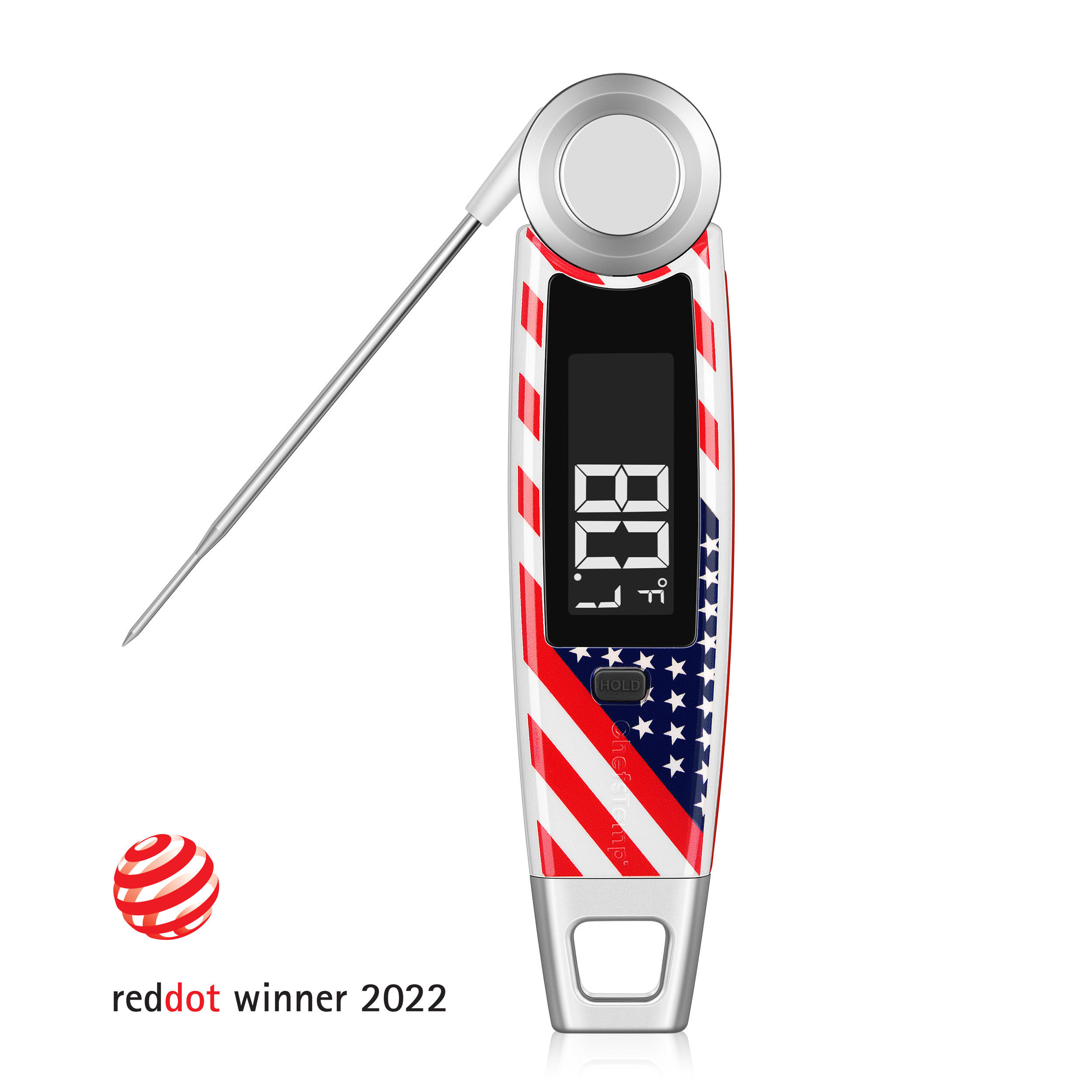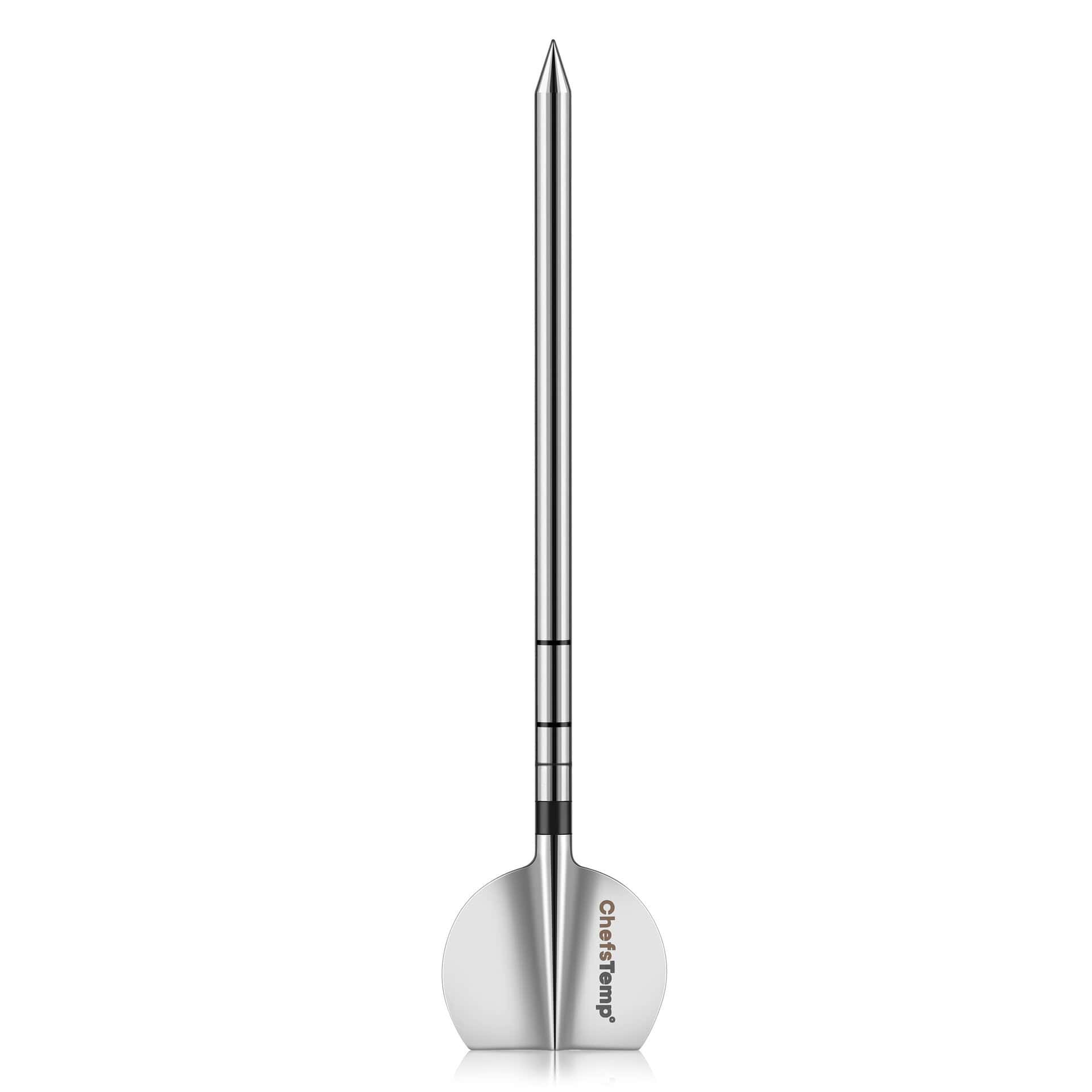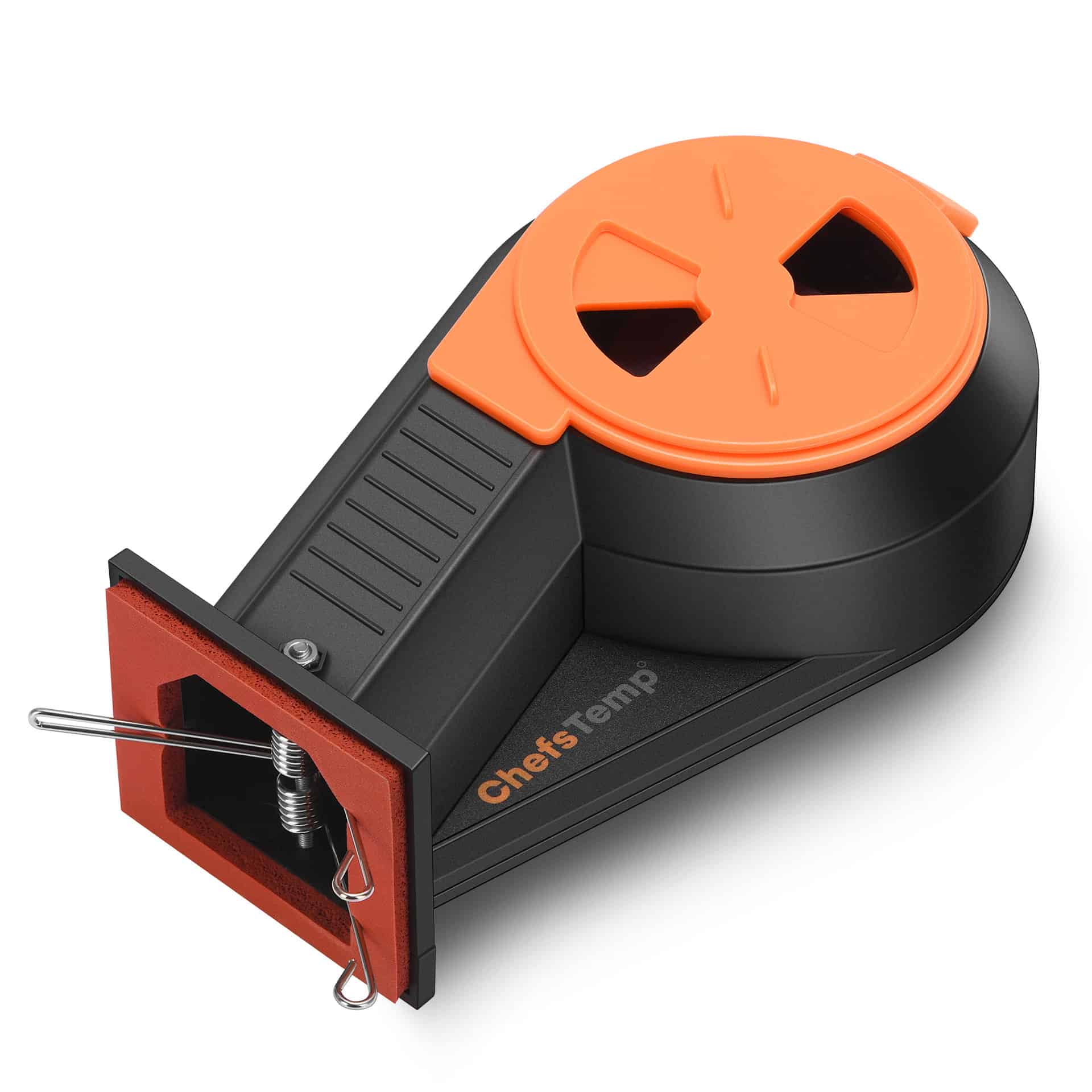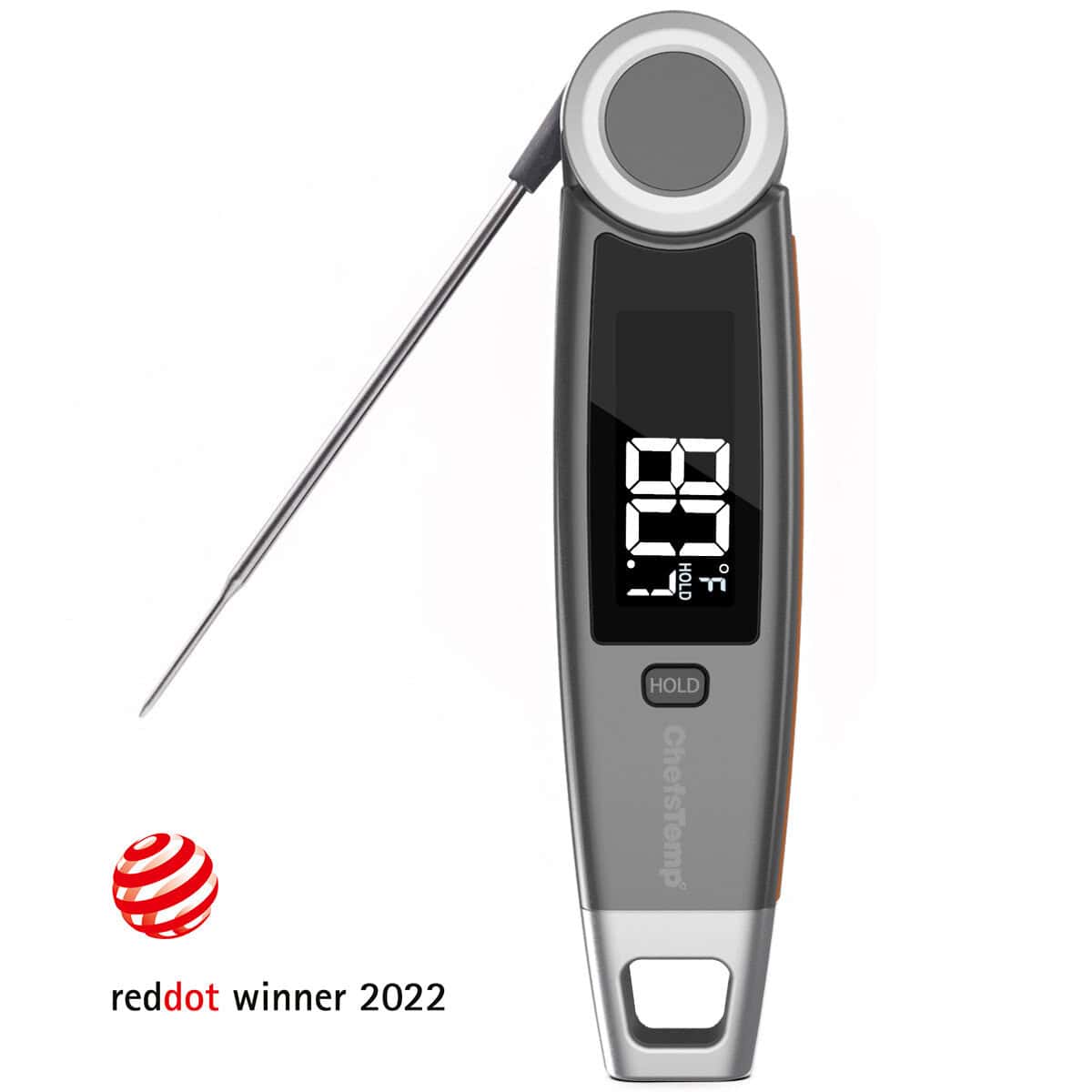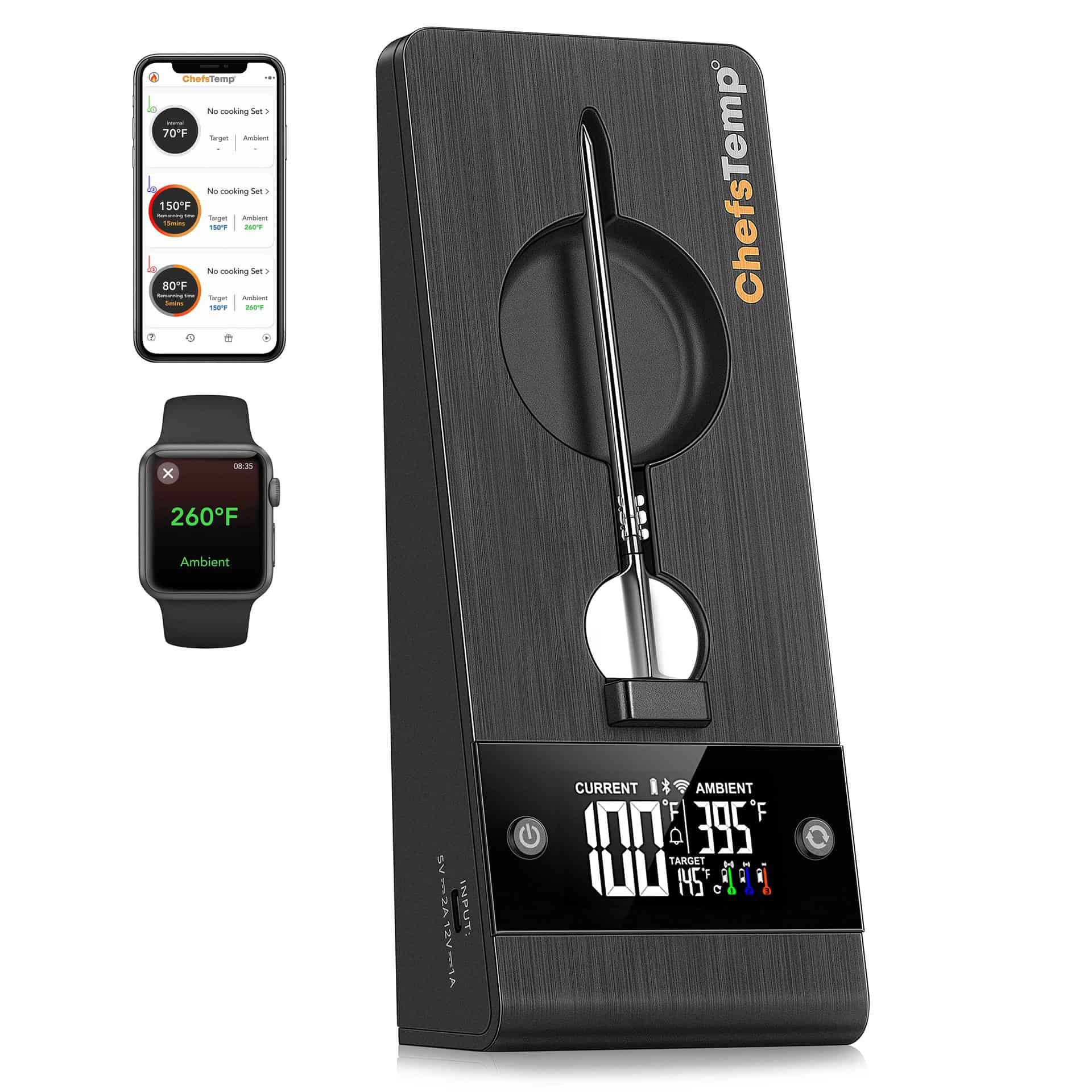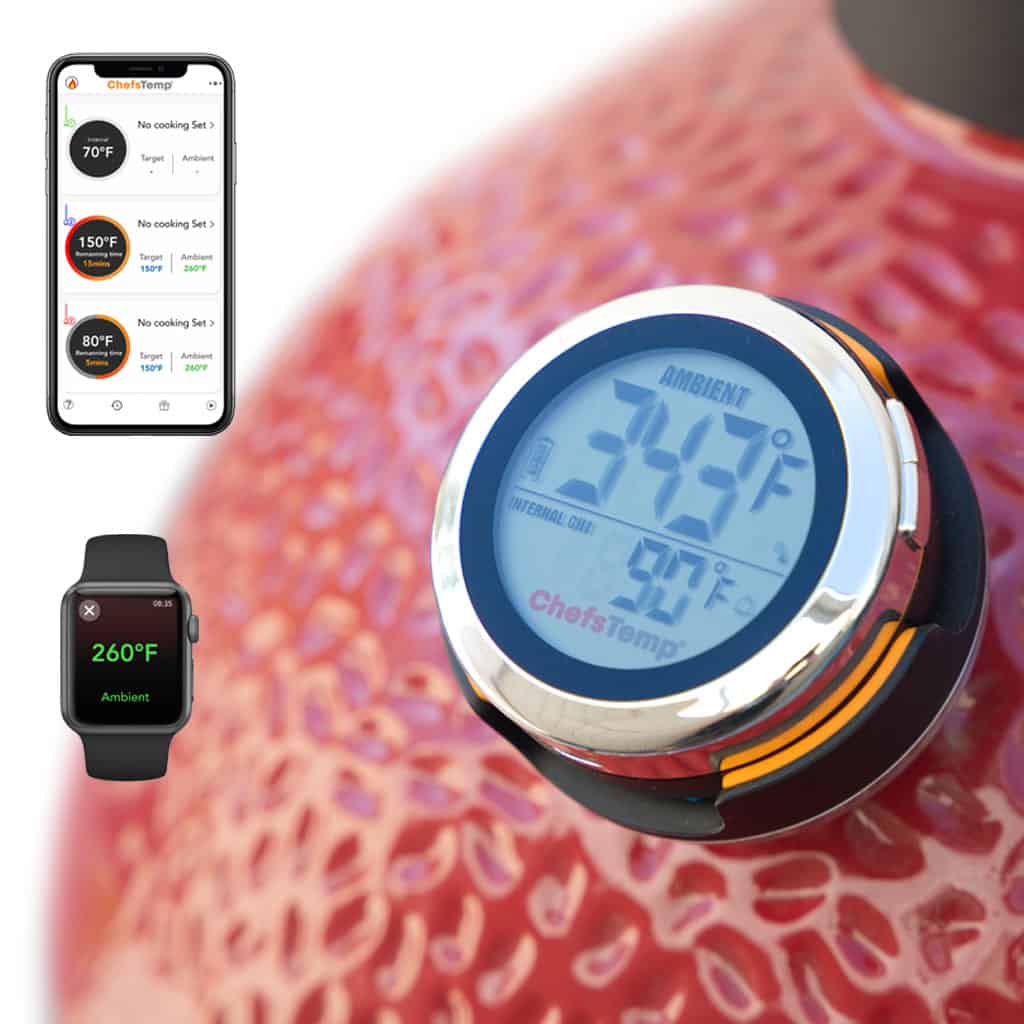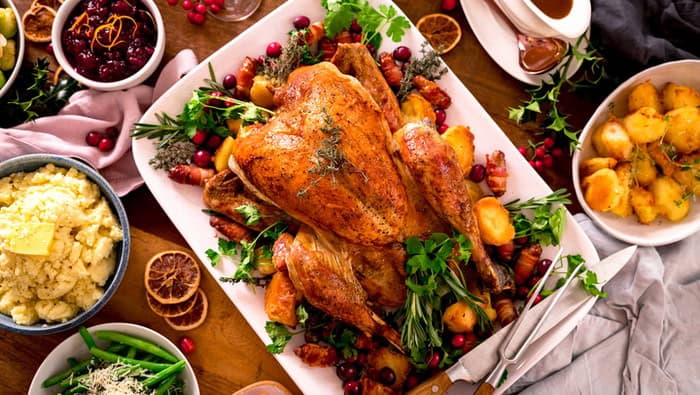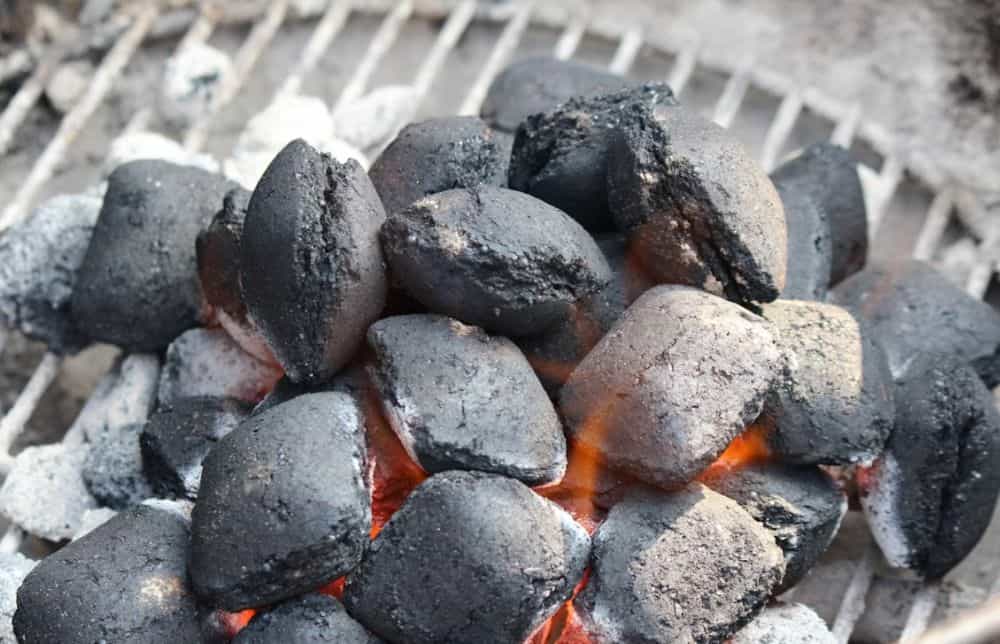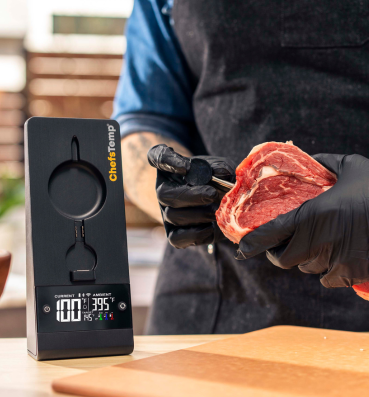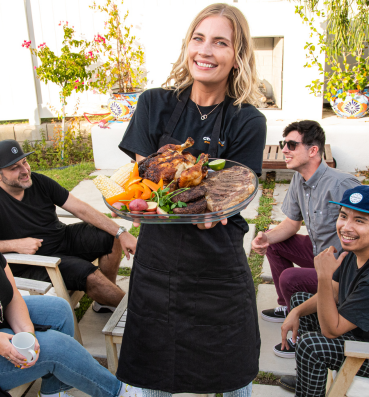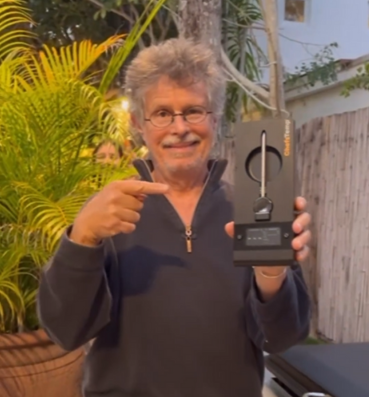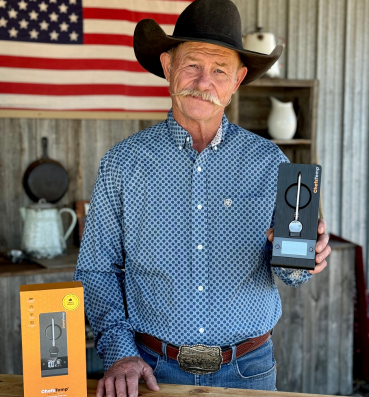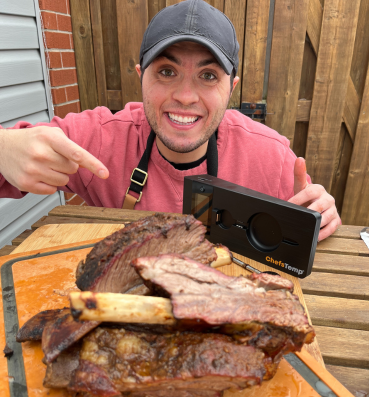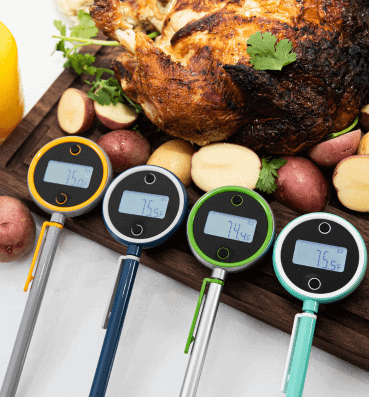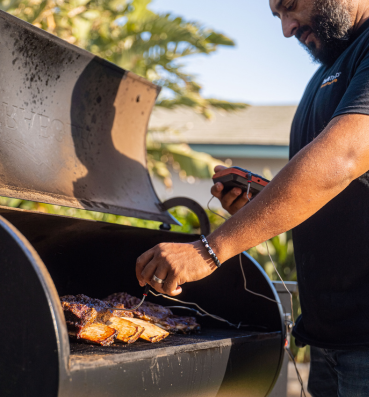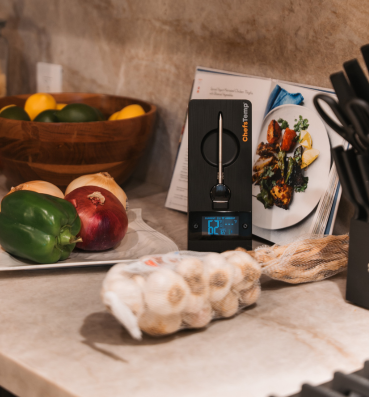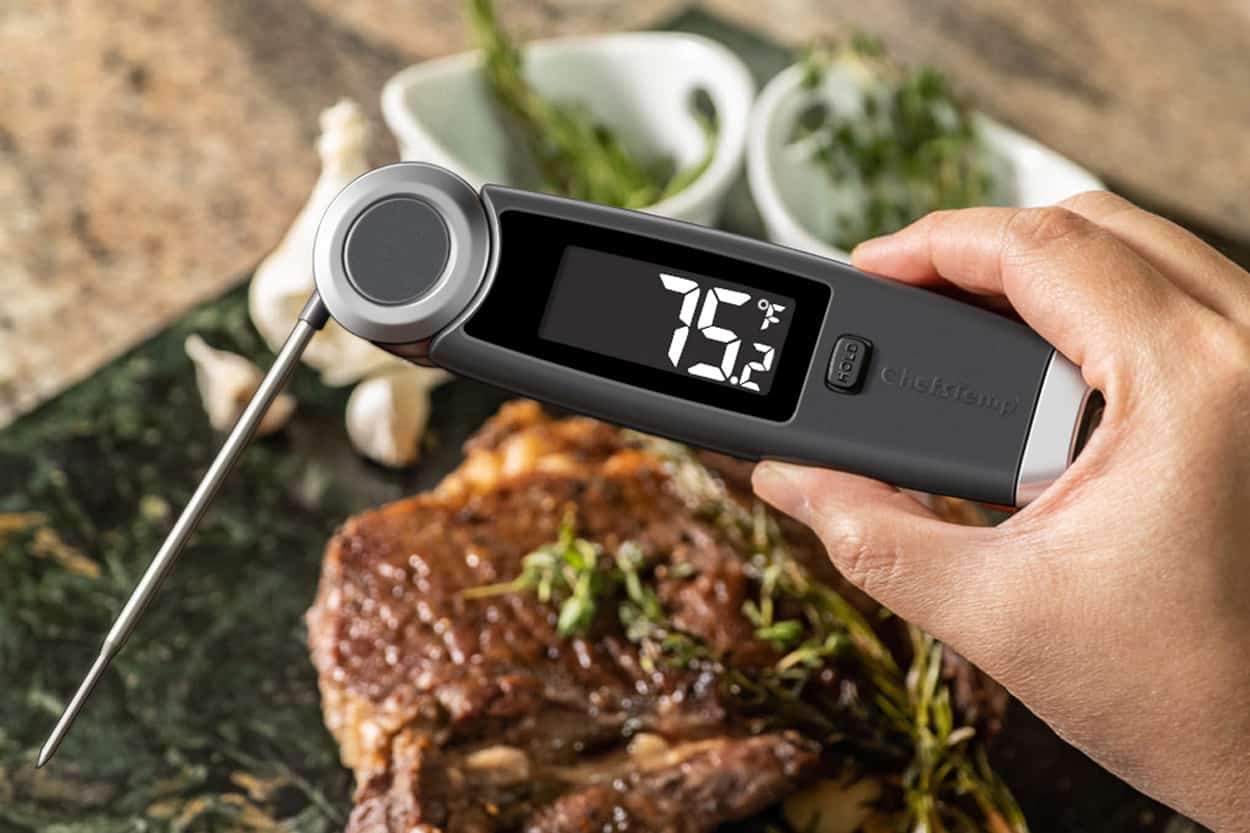
FAQs about BBQ
Hey guys, let’s go on with frequently asked questions on bbq. Here we go!
What are some grilling mistakes that are ruining BBQ meat?
Grilling meats on a BBQ grill is almost an art form. Before you start your grill, there are some things you need to gather and have in place. An instant-read thermometer, I use the ChefsTemp Final Touch X10 for steaks and chops, chicken breasts and thighs, and similar cuts of meats. For roasts and whole birds, you need a probe thermometer that can be inserted into the meat and left in place, I use the Smartro ST54 Digital Cooking Thermometer for that application. You need to have any sauces or flavorings ready; you need either a food mop or a silicon high heat basting brush, aluminum foil, tongs, and spatulas. Never use a meat fork while cooking meat, every time you use a fork to flip meat, you must pierce the meat and the juices inside that keep it moist will run out. It is better to use tongs or a spatula. Having your heat too high with items like skin-on chicken, or any heavily fatted meat will cause a flame up and will char the outside of the meat before the inside can cook. Lower heat will make the grilling process longer, but the results are far better. Constant turning of the meats is also not recommended. Usually, people get in a hurry and try to flip meat too soon. They often run into meat sticking to the grill, which if you wait a few more minutes, the natural caramelization of the meat will cause it to release from a properly prepared grill. To prepare a grill for cooking, heat the grill up on high heat, above 400 degrees f, then scrub the grill with a grill brush, and then take a clothe with oil and a pair of tongs and rub the oil all over the grill, or use some beef fat and rub it on the grill plate with a pair of tongs.
How can one roast beef brisket without it being tough and inedible?
Brisket is a large muscle from between the forelegs of beef cattle. This cut of beef gets a tremendous amount of use from the live animal as it walks and forages for feed. It has a large fat cap, and a lot of interconnective tissue in the meat. This cut of beef needs to be slow-cooked. Whether you smoke it, roast it, prepare it in a slow cooker or instant pot, this meat needs time, and low temperatures to thoroughly cook and become tender. When being prepared for cooking, it has some hard surface fat, this is subcutaneous fat between the skin and the soft inner fat next to the muscle structure of the brisket. It does not render with cooking and will leave an odd taste in the meat if it is not trimmed. If you are not comfortable with your knife skills, ask your butcher to trim the brisket for you, most meat departments and butcher shops will be happy to trim it for you. Next, you need low-temperature cooking. This means cooking it at around 225⁰F. This lower cooking temperature will allow the meat to naturally tenderize as it cooks. Once you have it cooked to your desired temperature, pull it from the heat source, oven, smoker, slow cooker, and let it cool completely and even refrigerate it overnight before slicing if you want it sliced, or shred it when it comes out of your heat source. This will give you the perfect brisket every time. Make sure that you completely coat your brisket with a rub that is going to produce the flavor component that you are seeking.
What is the best way to prepare a flank steak?
Flank steak is one of the toughest steaks on beef. As the name says, it is the cut of meat from the flank, it gets almost as much exercise as a brisket, which makes it tough if cooked and sliced wrong. Never cook one past medium-rare, 145⁰F, and always slice it across the grain on a bias. Flank steak is used in a lot of great dishes, especially for dishes like stir fry, and fajitas. Cutting it with the grain or cutting it straight instead of on a bias will produce a nearly inedible piece of beef. Keep in mind that you want this cut of beef to be done at 145⁰F. It is best to marinate the flank steak overnight with natural tenderizers like pineapple, papaya, and similar items, however, remember to remove it from the marinade after approximately 12 hours or the natural tenderizers will literally dissolve the meat.
What are simple barbecue tips to make you a better griller?
Always have your prep done before you light your grill. In French, the term is Mise en Place, which means everything in place. If you want the best grilling experience, then do the prep ahead of time. Get the grill hot, cleaned, and seasoned. Have your cooking utensils at the ready, make sure if you need foil, pans, squeeze bottles, sauces, oils, or spices that you have them at hand before you put your items on the grill. Check best if used by dates on all your items, the fresher they are the better they taste. Have digital oven thermometers and instant-read thermometers ready, clean, and use. The old touch method or hand method will get you close, but you need to make sure you have gotten meats to the proper temperature. Also, you need to monitor the temperature of your grill. Grill thermometers are inexpensive, and if one of those is not available, you can use an oven thermometer instead. Most people have their grills too hot while cooking, you need it hot to make good grill marks, but after that is accomplished, turn the grill down, move the meat to a colder part of the grill or wrap it in foil to protect the meat from drying out.
What are some temperatures which are of interest to cooks?
Knowing the temperatures of doneness of meats is probably as important as knowing the cooking temperature you are cooking at. Finish temperature, pull temperature, and heat temperature all refer to different things, do some searching online and get a temperature chart for meats. Each meat has different pull temperatures, cooking temperatures, and final temperatures and they all affect food safety. Remember you must get the meat out of the danger zone, 41⁰F-135⁰F, to produce meat that is safe to eat, tasty, appetizing, and most importantly done. All things that are cooked have what is known as carry-over cooking, which means that when you pull the item from the heat source, it is going to continue cooking for 5-20 minutes depending on how thick the meat is. This is your pull temperature, 5 degrees below your final temperature
What is the difference between grilling and roasting?
Grilling or roasting? What is the difference? Grilling is using an open flame source with the item to be cooked directly above the flame cooked on a metal grate or rack. Roasting is done in an oven and usually requires more cooking processes to get the meat done and is done at lower heat. Remember, grilling is like cooking over an open fire, the meat is suspended above the heat source, and near the flames. Some of the things that can occur with grilling that do not happen with roasting are the possibility of flare-ups due to the grilling meat rendering fat and the fat, which is highly flammable, dripping into the open flame and igniting. Roasting is done in an enclosure, an oven, and the heat source is outside the closed box, and the box is heated to a controlled temperature to cook the meat. There are many types of ovens, brick ovens, conventional ovens, convection ovens, and all these do essentially the same thing, surround the meat with constant, controlled heat, without the danger of the fat igniting in an open flame source.
What are some mistakes to avoid when grilling steak?
Most grilling mistakes are made in how well the heat is controlled. One of the things grilling does is allow for the making of grill marks, usually a crosshatch pattern done by turning the meat 90 degrees after the initial grill mark is made. However, once the hatch marks are made, the meat is usually turned over and it is at this point that the heat needs to be lowered. Either by moving the meat to a colder part of your grill for charcoal and wood grills or turning off burners on a gas grill. Pellet grills are different because the pellets are added by the grill as needed, they have electric heat sources to keep the pellets smoldering, and the grill monitors how often the pellets are added to maintain the heat, they also use convection heat, created by a blower fan that circulates the heat. Get to know your grill and where the hot and cold spots are, or how to turn off burners, and with pellet grill/smokers, turn the heat down. Doing this will help you achieve the goals of grilling great meats.
Should you close the lid when grilling steaks?
This is often a disputed technique, some people say never close the grill, others say closing the lid creates an oven, which it does. Closing the lid also helps control flame ups, so in my opinion, if you are grilling thick cuts of steak, chops, ribs, and other meats that require more time to cook, then, close the lid and turn the heat down once you have great grill marks or have the outside of your meat seared. It is always easier to cook it more than to deal with it being over-cooked. It is like adding salt to a dish, if you season light, you can always add more, but if you season heavy, you cannot take the salt out. Err to the side of caution, use an instant-read thermometer to monitor the heat.
How long does it take to cook a steak at 200 degrees?
Cooking a steak to 200⁰F is tricky, first, you must deal with the steak drying out before the meat reaches the desired temperature. To get a steak to 200⁰F will require you to cook that steak for close to 30 minutes, constantly turning it once you have it grill marked, and a steak cooked to this temperature will have no natural juices left in the meat which means you are going to have to sauce it. That means adding barbecue sauce, or melted butter, and constantly basting it as it cooks. Well done is 165⁰F, that means no pink, no color but brown inside the meat when you cut it open. To get above this temperature and getting it to 200⁰F is going to require constant attention and an extended cooking time.
How do you grill the perfect medium steak on a BBQ?
Medium final temperature is 145⁰F-155⁰F, this can be accomplished by following a few easy steps and paying attention to the grill and always keeping your thermometer ready to take spot temperature until you reach the desired temperature. You will also need to cook with the lid closed, and to move the meat to coldest part of the grill. Cooking a medium steak is not complicated, it just requires you to pay a little more attention and take a few steps once you have your grill marks on the meat. It is easy to overcook a steak and pull temperature is critical for a juicy medium steak. If you want your steak more on the upper end of the medium range, pull it at 150⁰F and let it rest, if you want it on the bottom of the temperature range, pull it at 140⁰F. If you do this, you will achieve the perfect medium steak.
How do you make excellent BBQ beef ribs?
Beef ribs come in several types. Short plate, short ribs, and long ribs, the short plate and short ribs are the meatiest, they have a high concentration of fat, and are easy to peel the silver skin off. Long ribs have less meat, more bone, higher amount of connective tissue, and require some extra care to produce a meaty, flavorful rib that you will enjoy. The long ribs require the removal of the silver skin, that you sear them on high heat, and then move them to the coldest part of the grill, then you need to baste them constantly and keep the lid closed while cooking them. The short plate and the short ribs are not really grill selections; they are best cooked by braising them. It is important to keep high-fat meats away from open flames to avoid flame ups. Once you get the ribs to 155⁰F, remove them from the grill and then wrap them in foil or put them into a foil covered pan for 20 minutes. Do not forget to baste your ribs every few minutes so that the sauce you are using to baste with penetrates the meat and helps it remain tender and moist.
Is preferring a steak well done really that bad?
Having a steak cooked to well done, 155⁰F-165⁰F is not a bad thing, it is a preference. The only steak that should never be cooked past medium, 145⁰F-155⁰F, is Filet Mignon, and that is pushing it. The meat has no outer fat to protect it from drying out, the intramuscular fat, known as marbling, melts quickly, and once it is melted, there is no fat left to keep the meat moist and the gaps left in the grain of the meat will cause the steak to be very tough, and that is not what filet mignon is known for. If you want a steak cooked to well done, choose a New York or ribeye, they have outer fat and other layers of fat to help the meat stay moist, and you can get both with the bone in which also adds a flavor dimension and helps to keep the meat from drying out.
What makes great barbecue?
This question has many answers because in each region barbecue has a different meeting. In the United States, on the west coast, i.e., California and the pacific northwest, barbecue means using a grill. In the south and Midwest, it means using a slow smoking method, and in the northeast, it refers usually to anything with barbecue sauce applied. So, making great barbecue depends on where you are located and who you are feeding. To make great barbecue no matter where you are living is about flavor. Whether it is from grilling, smoking, or even from the application of barbecue sauce, and that is another tier of flavor unto itself, because barbecue sauces differ regionally as well. In Alabama, it is a mayonnaise-based sauce, in South Carolina it is a vinegar-based sauce, and in other areas of the country it is a tomato-based sauce. Each one has a different flavor component and is regional and often comes into conflicted discussions as to what barbecue sauce is. For most people, St. Louis style sauce, tomato-based, is what is referred to as barbecue sauce, but the other two are also barbecue sauce, and region dictates the sauce.
Should we flip the steak only once or every minute?
Flipping a steak constantly removes it from the heat source. It is best to follow this rule of thumb for steak. Place our steak on a hot grill, mark it, turn it 90 degrees once it releases naturally from the grill plate, then make the second grill marks, once you do that, turn your heat down and flip the steak over and let it cook. Never use a meat fork or spiked turner with steaks, always use tongs or a spatula. Piercing the steak will allow the juices to seep from the meet and will dry out the meat before it is cooked to your desired pull temperature and the finished steak will be tough and dry. This is the most common mistake made in grilling steaks.
Why is meat mostly cooked medium rare instead of well done?
Cooking steaks and roasts to medium rare is about flavor and juice. A steak cooked to medium-rare, 135⁰F-145⁰F, finish temperature, allows the meat to be pink in the middle instead of red, the juices do not resemble blood when you cut it, and the steak usually remains tender and succulent to eat. The longer you cook a steak the dryer and tougher it gets; the proteins bind in the meat and cause it to get tough. So medium rare has become the most desirable temperature to cook a steak to. To make sure you achieve the correct doneness, insert the probe the meat in the thickest part to determine pull temperature, and always let a steak rest for 5 minutes before serving it.
How long should you grill pork spareribs?
Pork spareribs are relatively tender once you remove the silver skin from the back. Removing the silver skin is very easy to do, you take some paper towels and grip the silver skin with the paper towels and pull evenly and the silver skin will peel right off. Once you have that done, season your ribs, or marinade them, then place them in the refrigerator for a couple of hours. Remove them from the refrigerator about 45 minutes prior to cooking them and allow them to come up to room temperature. Then place them on a hot grill, sear them on both sides, turn down the heat, remember to start them on the face side first, and then turn them over to cook the bone side once you have them seared, turn down the heat and start basting your ribs every 15 minutes and pull them from the grill once they reach 150⁰F and allow them to rest covered with foil, best to place them in a pan, baste them lightly with sauce one final time, and then cover them with foil for about 20 minutes. Once they have rested, you can cut them apart and they are ready to serve.
What is the cooking temp and time for a medium turkey?
Turkey must be cooked to a finish temperature of 165⁰F at the thickest part of the breast next to the bone. You will need to use a multi-probe thermometer, the Smartro ST54 is ideal for this, place one probe into the thickest part of the breast all the way to the bone, and one probe into the thickest part of the thigh at the bone. The thigh will reach a much higher temperature than the breast, but do not stress, it is normal, the thigh is dark meat and has enough fat in it to handle the higher temperature without drying out. Once you reach 160⁰F in the breast, pull the turkey and cover it with foil and let it rest for at least 20 minutes before slicing it for serving.
Why does my BBQ chicken have blood in it despite the cook temp being beyond 165⁰F?
All poultry must be cooked to 165⁰F. When you pull your chicken out at 160⁰F and let it rest for 20 minutes it will reach the desired temperature. Sometimes no matter how long you cook the chicken it will remain red at the bone and seem to have blood in it. This is usually caused in the slaughtering process and the meat is safe to eat. It is not appealing to the eye though and most people instantly think the chicken is still raw and will refuse to eat it. The best way to over come this is to cook it to the desired pull temperature, then place it in a foil covered pan, and place it back on the heat source for an additional 15 minutes, it will be above the pull temperature, but only slightly, and it will finish removing the pink, bloody looking meat. The meat at this point gets a dark brown color at the blood looking area but is done.
Is it better to cook bacon on a low temp?
Bacon is unique in that it is usually smoked already, and the cooking process is basically just rendering out the fat, medium to medium-low heat is best for bacon, it will crisp up even after being removed from the heat. If you are unsure as to how hot to cook it, and want it to be perfect, cook your bacon on a cookie sheet in the oven laying flat at 350 degrees until it reaches the desired crispiness. Final temperature and pull temperature are not as critical with bacon as with other meats, remembers, most of the bacon you buy is already smoked and cured, you are only rendering out the fat. If you want to save bacon grease to use in other cooking adventures, then either cook the bacon on an oven rack and pour off the grease or cook it in a frying pan on medium-low heat and the as the fat renders it will thoroughly cook the bacon and get it crispy. Drain the bacon on paper towels and save the grease.
What temp should salmon be cooked at?
Salmon can be cooked in a variety of ways. What you are seeking in texture, taste, and application of a recipe determines how you cook salmon. You are wanting to pull the salmon when it reaches the medium rare state, that is 135⁰F-145⁰F. To accomplish this on a grill, you need to score the skin, and use skin on salmon on a grill, or in a smoker, brush the salmon with some olive oil and season with salt, black pepper, and herbs like dill weed. Then grill it skin side down on a medium hot grill, about 300⁰F, in a smoker, you need a completely different process, you need to cold cure the salmon and then smoke it with cold smoke at 135⁰F, if you bake it, you need to prepare it as you would for the grill and then bake it at 350⁰F until it reaches the desired pull temp. If you want to pan sear it, follow the same as you would to grill it, use a non-stick pan, and start it skin side down and crisp the skin first and then turn it once and remove it when it is medium rare. If you do this you will have great salmon.
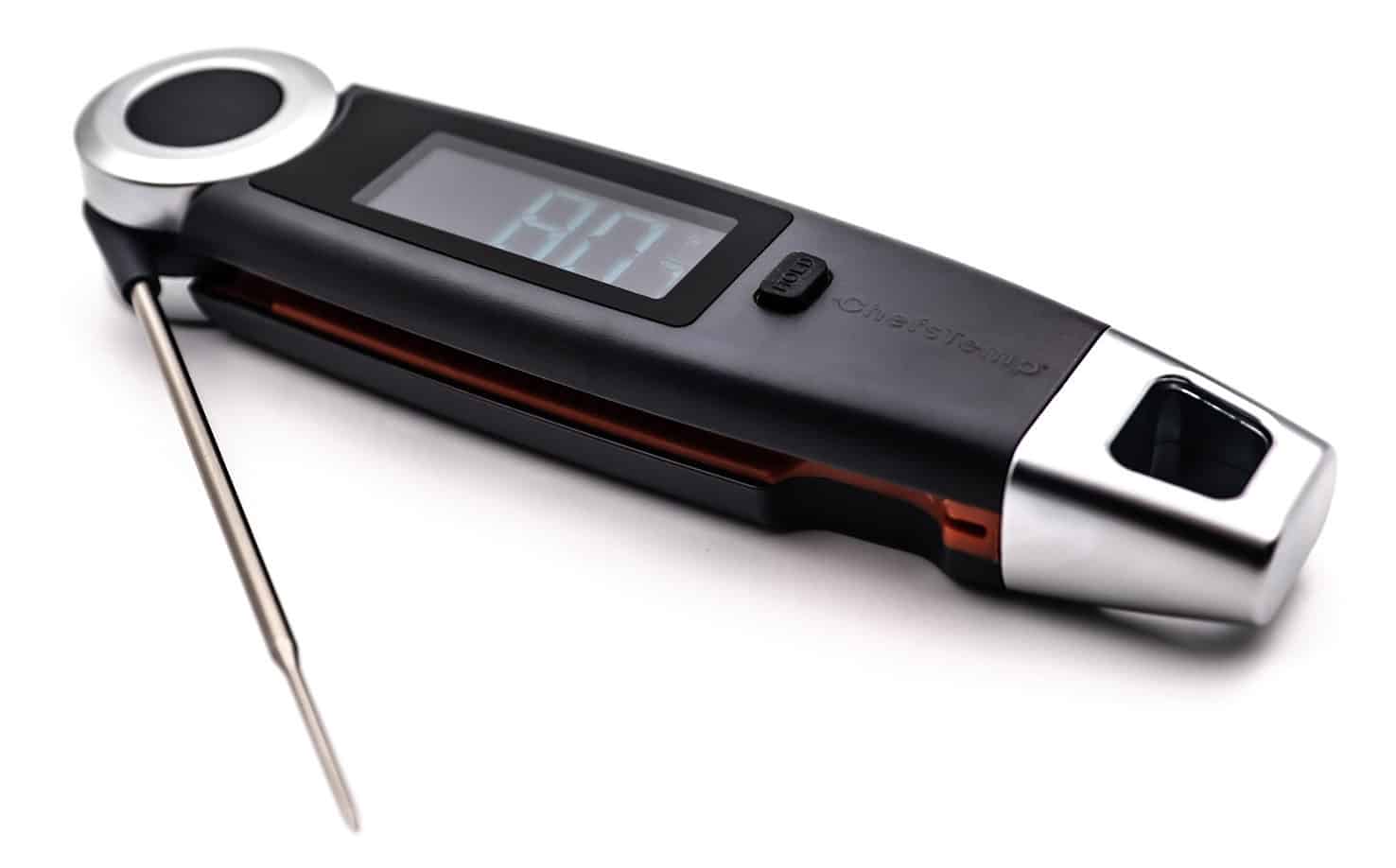
Finaltouch X10
The Finaltouch X10 thermometer from ChefsTemp gives an accurate reading not only for the inside of food but for surface temperatures as well. The diversity of the thermometer’s usage is second to none compared to other thermometers. By getting a reading within 1 second, the Finaltouch X10 from ChefsTemp is prepared to take on any task it is given.
Discover Other ChefsTemp Products
Discover more recipes and learn kitchen tricks by joining our cooking family on Facebook.
You may also like:
